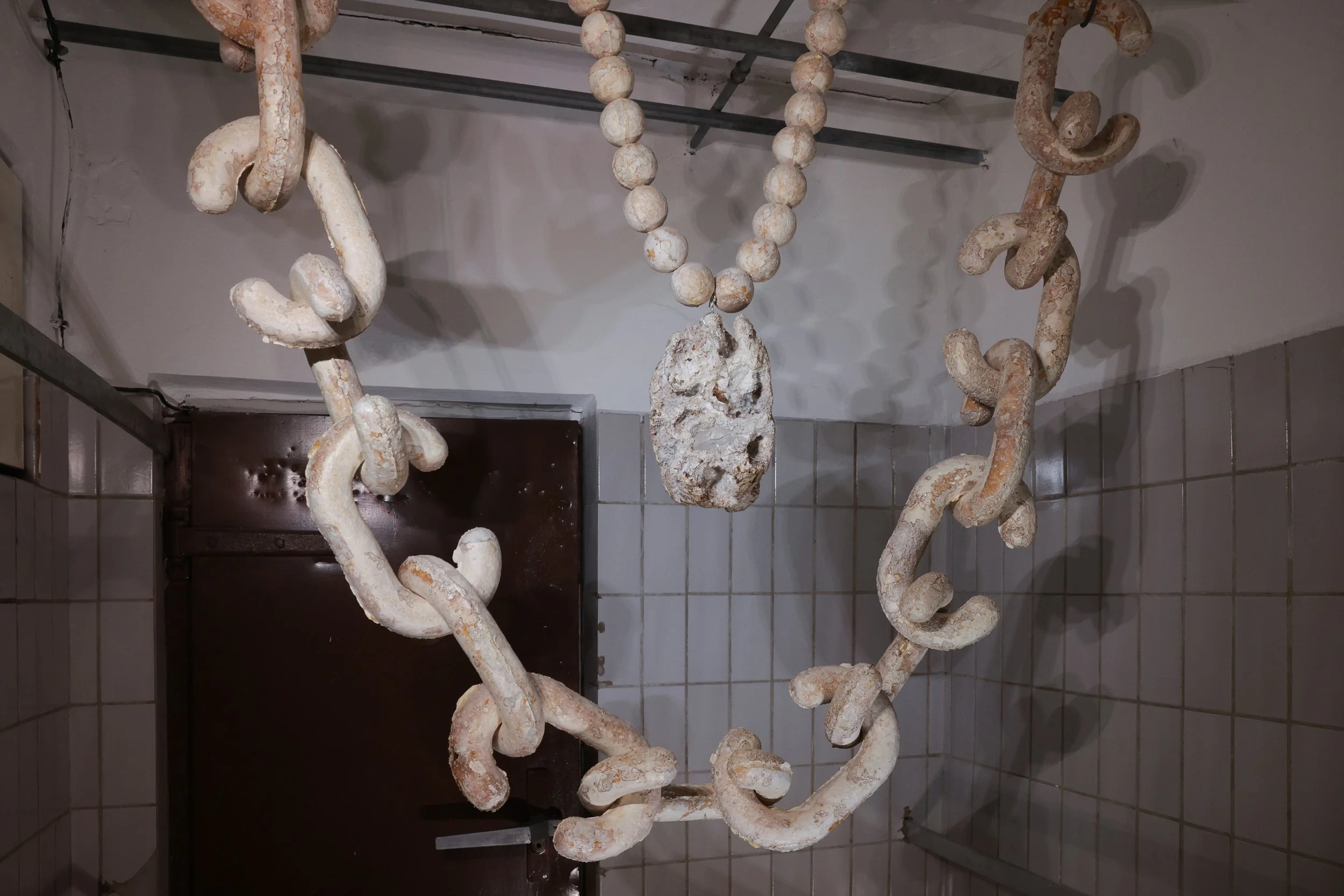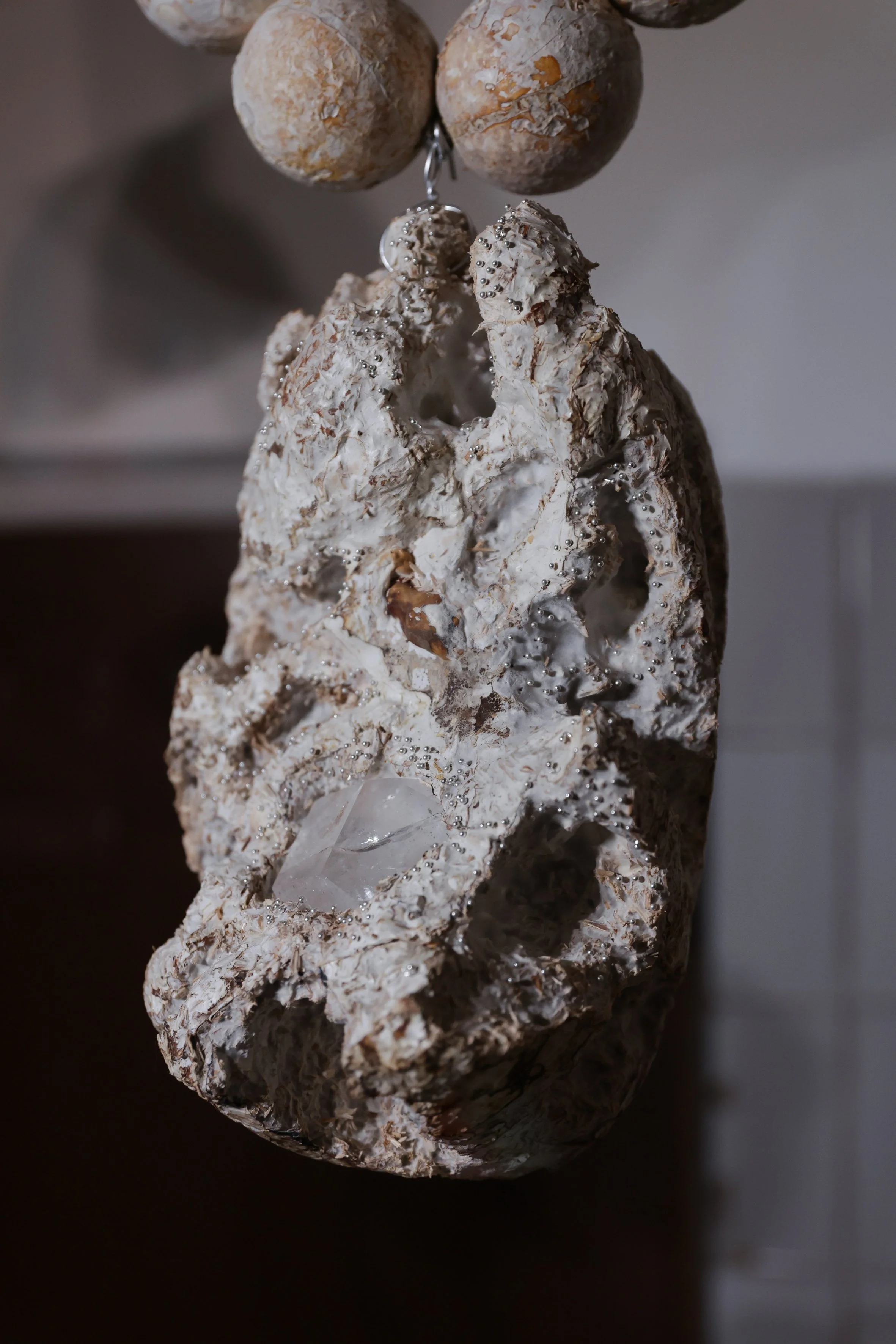
Martina Kocianová
she/her
London, United Kingdom
I am Martina Kocianová, a jeweler and artist living in London, known for my innovative use of mushrooms in jewelry and design. My unique work combines traditional jewelry-making techniques with natural materials, especially mycelium, which is playing an increasingly important role in my creations. I studied jewelry design at Central Saint Martins in London and pursued traditional Japanese jewelry-making in Tokyo, which has greatly influenced my precise and detailed approach to the craft. Throughout my career, I have received several awards for creatively linking mushroom materials with classic jewelry techniques, such as stone setting, crystal cutting, and Japanese engraving. Currently I am part of the Sarabande Foundation established by Alexander McQueen in London.
“Since 2019, I have been working with mycelium – the invisible network of fungi that I began integrating into my jewelry and design objects. I am fascinated by the ecological and sustainable qualities of mycelium, which I see as a symbol of connection and renewal. I incorporate this principle of connection into my pieces, in this specific work using the symbol of the chain. Moreover my work explores traditional jewellery crafts like gemcarving, Japanese engraving, stonesetting and using fine materials.”
How does your work relate to the theme connection?
“By using mushroom mycelium, which functions as nature’s ‘forest internet,’ I wanted to emphasize how deeply interconnected everything in the natural world is. Mycelium networks allow plants and trees to communicate, sharing nutrients and resources, which mirrors the unseen connections that tie us all together. For me, mycelium became the perfect material to express this theme because it naturally symbolizes unity and connection. What is interesting in the work is that I am allowing the material to be self directed, self fulfilled into preconceived shapes.
The links I created from living mushrooms are meant to represent growth and transformation. What I find fascinating is that they’re not static pieces—they’re alive, evolving, and changing over time, much like our relationships and connections with others. The link can be a jewellery piece itself or connected with one another to create a massive necklace and or sculpture- depending wether in the moment it serves the body or the space it is in.
I also chose the symbol of the chain to highlight the theme of connection. Chains, to me, represent both literal and metaphorical links—whether it’s between people, nature, or space. Each link is part of a larger whole, and that’s what I wanted to convey: the idea that we are all connected in ways we might not even realize."
"Mycelium Jewelry", Mycelium, crystal, aluminum, full sculpture: 51" x 43.3", one link: 17.9", necklace: 19.7" x 19.7", 2024NYCJW24 @ UrbanGlass, Francely Flores
What role does connection play in your creative process?
“Connection is central to my creative process, and through natural elements, I aim to connect with both nature and people. I work with organic materials like mushrooms and mycelium, which are deeply intertwined with their environments. Mycelium, in particular, is a powerful symbol of connection. It forms intricate networks beneath the soil, linking trees and plants, allowing them to share nutrients and thrive together. For me, using mycelium in my work tells a story of this natural interdependence, and it embodies the idea of sustainability and regeneration.
Through my jewelry, I want to promote the environmental potential of mycelium. By using this material, I aim to show its versatility in art, design, and fashion. My goal is not only to create beautiful pieces but to inspire others to see the possibilities of sustainable materials like mycelium. I see my work as a way to bridge art/jewelry and environmental awareness, offering people something that is not just wearable but also meaningful and rooted in nature.
Philosophically, connection speaks to the relationships we have with ourselves, each other, and the world around us. Jewelry has always been a way to express these bonds, whether it’s through family heirlooms or personal symbols. I love how jewelry can connect us to our histories and communities, making it more than just an adornment.
In my designs, I incorporate forms like chains and branching patterns that mimic the structure of mycelium. These shapes symbolize the interconnectedness of all things—physical, emotional, and symbolic. By working with these forms, I aim to create jewelry that not only decorates but also reminds us of the deeper connections that bind us to each other and the natural world."
NYCJW24 @ UrbanGlass, Simon Leung
What connection(s) does your queerness make to the world around you?
"My queerness is a reflection of how I see the world—fluid, non-binary, and full of possibilities. As a pansexual person, I’ve always experienced life beyond the confines of strict binaries. Yet, I often feel the pressure of society trying to box me into a fixed identity or sexuality. Even I find myself occasionally caught in this binary thinking, depending on the people I encounter or the environments I’m in. But ultimately, my queerness allows me to approach life, relationships, and my art with a deeper sense of openness and freedom.
This fluidity directly connects with my work, particularly in how I use mushroom mycelium. Mycelium networks are non-linear, ever-growing, and constantly evolving, much like my own understanding of identity. Mycelium doesn’t fit into a box, it exists as part of a complex, interconnected system. To me, this reflects queerness, where identity, expression, and love are not fixed or constrained by societal norms, but instead grow and transform over time.
In my jewelry, I embrace the same fluidity. I use mycelium not only as a material but as a metaphor for how queerness interacts with the world around it. Just as mycelium connects trees and plants, my queerness connects me to different communities, perspectives, and experiences. It allows me to see beauty in complexity and to challenge the rigid structures that attempt to define us. Through my work, I hope to create pieces that not only reflect this philosophy but also resonate with those who, like me, see the world as fluid and full of possibilities."
NYCJW24 @ UrbanGlass, Francely Flores
Anything else you would like to share about this work?
This can be an important part of the process, sourcing materials, or research.
“For this particular work, I grow Reishi mushrooms in molds, shaping them into sculptures that reinterpret jewelry by enlarging it to monumental dimensions and placing it in public spaces. Instead of adorning the body, these pieces interact with the environment and the viewer. My goal is to shift jewelry from being a body-centric object to a space-engaging one, using exaggerated scales to humorously question its functionality.
The central pendant, hand-carved from mushroom mass, serves as a metaphor for scarring—just like how a living organism heals when damaged, much like human wounds. Other parts of my pieces involve carving into living mycelium blocks, which grow back after I finish. This process results in a unique texture that mimics the natural regenerative cycles of mycelium, which echoes the human experience of scarring and healing.
As a jeweler, I bring my traditional skills like polishing, engraving, stone-setting, wax carving, and even gem-carving, into my work with mycelium. By incorporating metals and crystals into mycelium pieces, I create a dialogue between nature and human intervention, expanding the boundaries of traditional jewelry-making."
[queerphoria]v4 @ ECU Symposium













